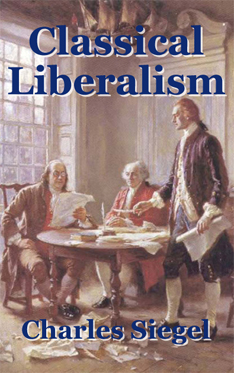Preservation Institute
The Natural Environment : The Social Environment
Transportation and Development Politics
Political Theory: Beyond Progressive and Conservative
Classical Liberalism
A Preservation Institute Book
Buy the bookRead the book in HTML formatPrint or read the book in PDF format |
“Classical Liberalism is a must read. For one thing, readers should not deprive themselves of the pure enjoyment of this engaging and clear-minded narrative of a broad swath of history. For another, anyone concerned about the state of democratic civil society in the West, and worried about its future, cannot afford to neglect this disarming analysis.”
- Prof. Elisabeth Lasch-Quinn, Syracuse University
According to conventional historians, liberalism went through two phases, laissez-faire liberalism and modern liberalism.
This book rediscovers a lost tradition of liberal thought and shows that liberalism went through three phases.
Classical liberalism believed in positive freedom, the right of people to manage their own affairs and to govern themselves.
Victorian liberalism had two aspects. One of these two is well known: laissez-faire liberalism accommodated the industrial economy by inventing the ideal of negative freedom, the notion that freedom is nothing more than absence of government control. But there was also a more idealistic aspect of Victorian liberalism, which grew out of classical liberalism but which is largely forgotten today.
Modernist liberalism kept the laissez-faire idea of negative freedom but applied it to a narrow realm of personal behavior. It expected centralized organizations to make important decisions, so it believed that individuals could only have personal freedom.
Laissez-faire and modernist liberalism redefined freedom as negative in order to accommodate economic growth. To revitalize the liberal tradition for our time, we need to revive the ideal of positive freedom.

